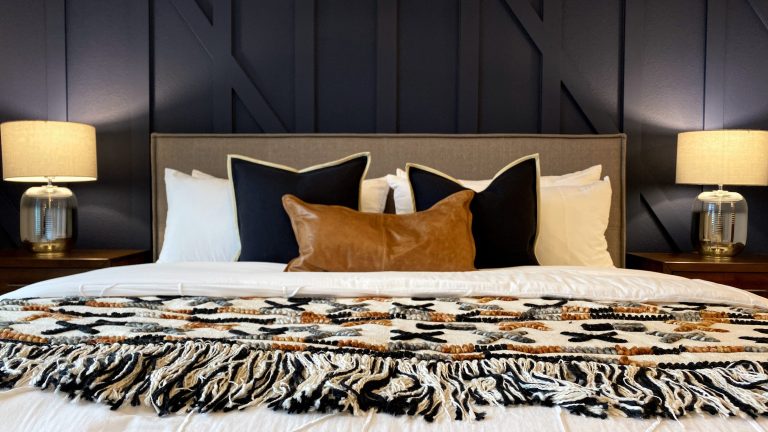If you want to add style and visual appeal to your room, consider the idea of a wooden accent wall. Wooden accent walls are budget-friendly and versatile, and they look great in any room, from bedrooms to bathrooms, and match a variety of design styles.
You have a variety of options when it comes to finishing a wood accent wall: You can leave the wood in its natural weathered state, paint it with a quick DIY project, or use the slats to create a unique pattern like a chevron. Jeff Andrews, founder of Jeff Andrews Design in Los Angeles and member of the AD PRO directory, appreciates that the aged look of natural wood gives a wall “an organic texture that can't be replicated with new or painted wood.”
As you plan your project, keep in mind that this accent wall should be chosen for function as well as aesthetics. Consider using a wooden accent wall to camouflage a storage closet or oddly shaped area, as the interior designer did in this space.
What is the best wood for an accent wall?
The wood you use to create an accent wall will depend on the type of space you're designing. Ipe or teak are known to withstand humid environments, making them ideal for bathrooms, according to Jessica Dorling, founder of Dorling Design Studio in Seattle. But if you're looking to incorporate a wooden accent wall in a living room, dining room, or bedroom, Dorling suggests trying white oak or walnut, noting that your choice will depend on whether you want a dark or light finish for the accent wall. “Each wood type has different characteristics and tones, so it's important to choose a wood type and finish that will work with the other materials and overall design,” adds Michelle Gage, founder of Michelle Gage Interior Design in Philadelphia.
Should an accent wall be a lighter or darker color than the rest of the walls?
Doering says there's no right or wrong way to choose a wood tone for an accent wall. “It all depends on how you want the wood tone to look in the space,” she says. A contrasting color wall will give a strong accent to the wood tone wall, but matching the wood tone to the wall tone can add texture to the space without creating a strong contrast.”
How do I create a DIY wooden accent wall?
Want to try a DIY project? Let an interior design pro help you, step-by-step. When DIYing your wood accent wall, remember to “measure twice (or three times) and cut once,” says Arne Jensen, founder of Arne Jensen Design in Walpole, Massachusetts. “Big box stores sell a variety of woods and styles, including tongue and groove and shiplap, or you can talk to your local lumber store about new or salvaged wood.”
But before you tackle the project, consider these wood accent wall ideas:

